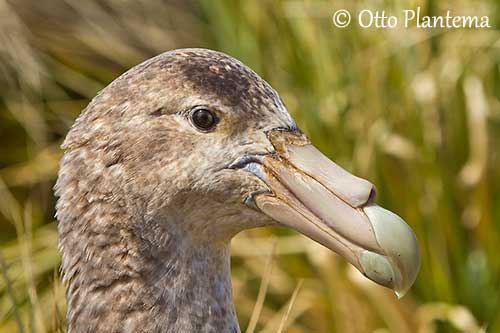
Text by Nicole Bouglouan
Photographers:
John Anderson
John Anderson Photo Galleries
Aurélien Audevard
OUESSANT DIGISCOPING
Tom Grey
Tom Grey's Bird Pictures
Ken Havard
My Bird Gallery & Flickr gallery 1 & Flickr gallery 2
Jean-Claude Jamoulle
A la rencontre des Oiseaux
Patrick Ingremeau
TAMANDUA
Tom Merigan
Tom Merigan’s Photo Galleries
Otto Plantema
Trips around the world
Simon Tan
PBase Bird galleries
Alan & Ann Tate
AA Bird Photography
Ingo Waschkies
My bird pictures on Pbase
Sources:
HANDBOOK OF THE BIRDS OF THE WORLD vol 1 by Josep del Hoyo-Andrew Elliot-Jordi Sargatal - Lynx Edicions - ISBN: 8487334105
A Complete Guide to Antarctic Wildlife by Hadoram Shirihai and Illustrated by Brett Jarrett - Edited by Guy M. Kirwan - ALUL.A Press Oy, Finland - ISBN 9519894705
THE HANDBOOK OF BIRD IDENTIFICATION FOR EUROPE AND THE WESTERN PALEARCTIC by Mark Beaman, Steve Madge - C. Helm - ISBN: 0713639601
L’ENCYCLOPEDIE MONDIALE DES OISEAUX - Dr Christopher M. Perrins - BORDAS - ISBN: 2040185607
BirdLife International (BirdLife International)
CREAGUS@Monterey Bay (Don Roberson)
What Bird-The ultimate Bird Guide (Mitchell Waite)
New Zealand bird status between 2008 and 2012
Biodiversity Explorer – The Web of Life in Southern Africa
Wikipedia, the free encyclopaedia
FAMILY PROCELLARIIDAE
Petrels, prions, fulmars and shearwaters
These small to fairly large pelagic seabirds come to land only for breeding, and usually at night. All have similar basic shape, with long, narrow, pointed wings and relatively short tails. They have mostly dull plumage with variable amounts of white, grey, bluish-grey, brown and black. They are known as “tubenoses” with their tubular external nostrils along the ridge of the culmen. Male and female are similar, and juveniles and immatures resemble adults.

They spend much of their lives on the wing, playing with the winds, riding the air currents above the waves or following the contours of the sea surface with few wingbeats, gliding on stiff wings and flying up to 10-20 metres or more above the water. However, they are clumsy on land owing to the rear positioning of their legs.
They feed on aquatic preys caught by plunge-diving or diving from the surface and even while sitting on the surface. They also perform pattering on water while flying.
They are usually colonial breeders and nest in burrows, rock crevices or open ledges (fulmars). They roost at sea often in large rafts and feed in small to large flocks.
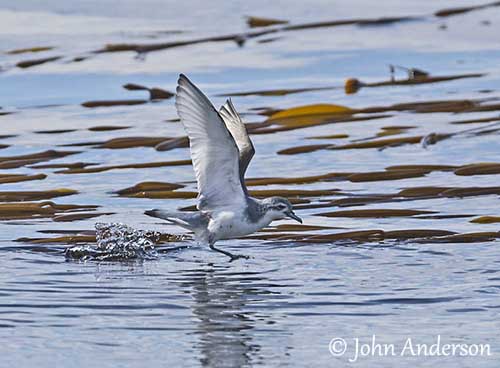
The Procellariidae are silent at sea and away from their breeding colonies. They are vulnerable to predation by skuas and other bird species, but also by introduced mammals on islands. They land near the burrow at night, and leave the colony just before dawn in order to avoid predation.
They are threatened by habitat deterioration, plastic and oil pollutions, human exploitation, destruction of the nesting burrows by human walking within the colonies, but also by cattle and other introduced species. The increase of fishing activities involves numerous birds drowned and killed in fishing-nets.
Several islands are today predator-free, but petrels, shearwaters, fulmars and prions, although having large populations in the Southern Hemisphere, suffer numerous threats and often from humans.
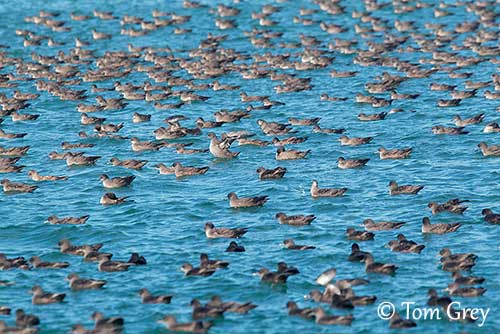
The Procellariidae can be divided into four natural groups of species displaying similar characteristics and behaviour. These groups are the fulmar-petrels, the gadfly-petrels, the prions and the shearwaters.
The fulmar-petrels’ group is not very uniform, and the birds may show great variation in size and plumage, but also in their range, as they can be found from the Arctic to Antarctica. However, diet and ecology are often fairly similar.
The size varies greatly, from the large petrels of genus Macronectes at around 5 kg, to the Snow Petrel (Pagodroma nivea) as little as 250 grams. The coloration ranges from pure white in the latter, to black-and-white pattern in the Cape Petrel (Daption capense). We can also find a dark phase in the Northern Fulmar (Fulmarus glacialis).


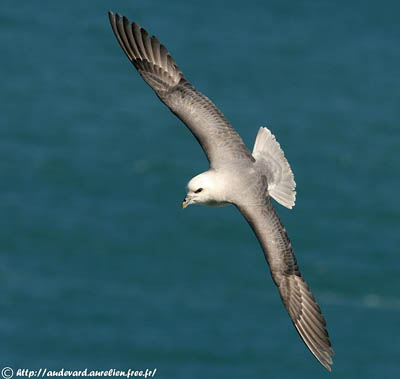
The two large Macronectes species have a wingspan of up to two metres. They have strong legs and can stand and walk more easily than other Procellariidae. They are able to tear open the thick skin of the carcasses of large aquatic mammals, thanks to their huge, powerful bills. The Southern Giant Petrel has a white morph with some scattered dark feathers.
They are highly opportunistic and feed mainly by scavenging on carcasses of sea mammals, but during the breeding season, they consume krill of genus Euphausia, and fish and squid during winter. They often forage near the coast and on land.
The giant petrels of genus Macronectes utter cat-like mewing and loud hisses. Both species nest on the ground and build a large cup made with grass, moss, small stones and bones. They are solitary nesters, but both species may breed together in loose colonies.
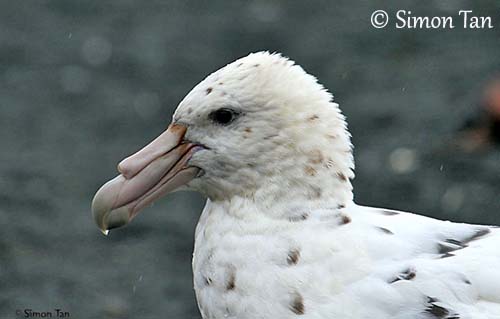
Pale morph
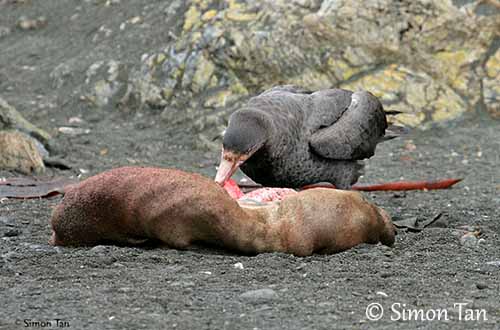
The two fulmars are smaller and resemble gulls with broad wings and large head. There are two morphs in the Northern Fulmar, a dark greyish-brown phase, and the second with pale grey upperparts and white head and underparts. The Southern Fulmar (Fulmarus glacialoides) occurs only with the latter plumage.
They feed mainly on fish, squid and small crustaceans, and occasionally take fish offal and carrion when available. They feed by surface-seizing while sitting on the water. They take zooplankton at night, but usually forage by day. They often gather around abundant food sources and fishing boats.
The fulmar-petrels are silent when alone, but they are very noisy in large flocks. They fight for food and produce grunts and croaking sounds. At nest, the repertoire is more varied and includes cackling, croaking and other guttural sounds.
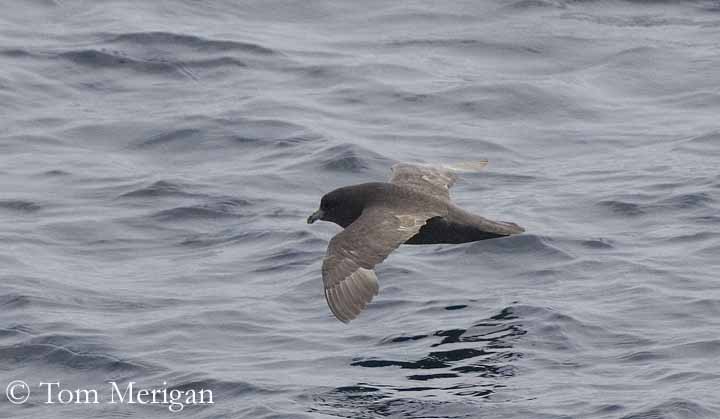
Dark morph
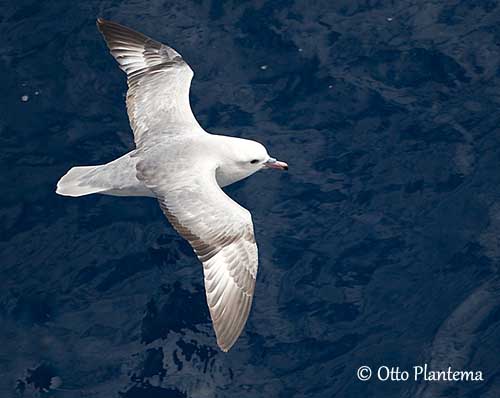
The Antarctic Petrel (Thalassoica Antarctica) and the Cape Petrel have a combination of white and dark plumage on upperwing and tail, dark head and white underparts. These agile fliers are medium-sized seabirds always active on water, and less clumsy on land than other Procellariidae.
The Snow Petrel has pure white plumage overall and is smaller than the previous species. It has two subspecies that differ in body size and bill size.
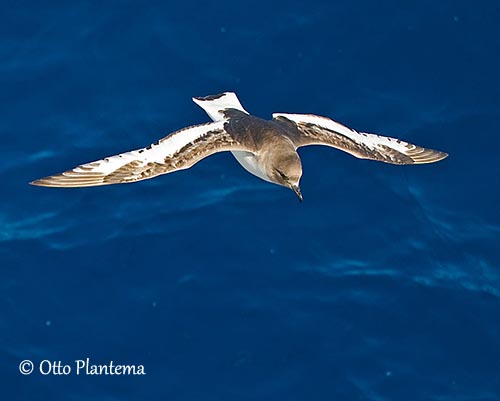
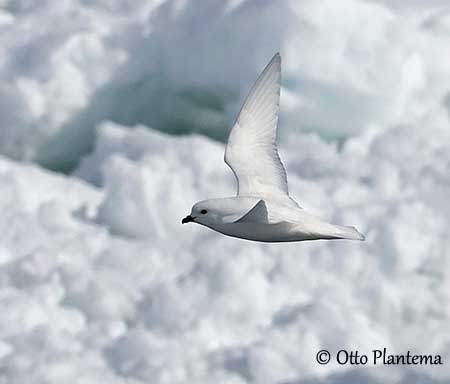
The three species feed on crustaceans of genus Euphausia, squid, fish, offal and carrion. The Cape Petrels form large flocks when following fishing boats, and feed by pecking actively ahead and to the sides in pigeon-like fashion, giving the bird its other name of Cape Pigeon. They also feed on the wing, by dipping or even diving to catch a prey.
However, the Snow Petrel is more often seen resting on ice floes than alighting on the water.
All are silent at sea, but become more vocal at colonies.
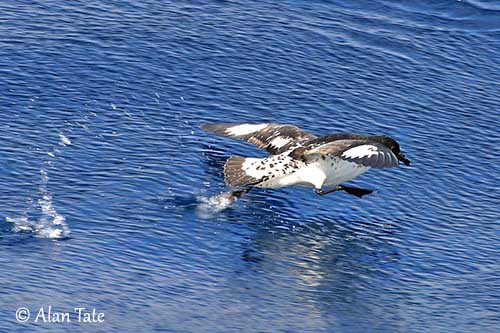
Take-off
The gadfly-petrels’ group includes rather similar medium-sized petrels, most of them of genus Pterodroma and the others of genus Bulweria. They have a complicated taxonomy and several species are still poorly known.
The Kerguelen Petrel (Aphrodroma brevirostris) is sometimes included in genus Pterodroma. But following recent genetic analysis, it is now placed in a separate genus. Some authors indicate that it is closer to Puffinus than Pterodroma.
The term “gadfly” used for these petrels alludes to the impulse that drives them to fly swiftly in wide arcs above the sea, as if pursued by a gadfly!
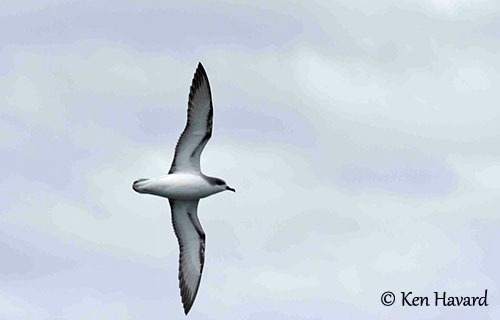
They are fairly large birds with long wings. Their plumage is usually dark above with grey or white markings, and white below with white face. Several species may have a dark band on breast or neck like the Soft-plumaged Petrel (Pterodroma mollis). Petrels of genus Bulweria and some Pterodroma species are dark overall, with paler areas on the wings.
The gadfly-petrels have short, hooked bills with sharp cutting edges, allowing them to seize and cut up small preys. They do not attend fishing vessels. They are highly pelagic and are always far from land.

They are very clumsy on land, and nest in burrows. In order to avoid predation, they nest mainly on offshore islets. They visit the colonies only by night. As nocturnal species, they cannot use visual displays, and mostly communicate through acoustic or tactile signals. They also use their well-developed sense of smell characteristic of the tubenoses. This feature is probably used to locate food by picking up the scent on the wind. It is also used for locating their nesting burrows in the darkness. However, they may nest in the open and visit the colonies by day on predator-free islands.
The gadfly-petrels fly fast and sometimes low over the water or by wheeling up into the sky or “towering”. They fly with rapid wingbeats interspersed with gliding. They feed on the wing and alight rarely on the water.
They are silent at sea, but become very noisy at night when visiting the colonies. They produce shrill cries while flying in flock at dusk, but other high-pitched and squeaky calls can be heard. However, the sounds differ when the birds are on the ground. They produce crooning and growling notes. Inside the burrow, they give moaning cries accompanied by some guttural sounds.
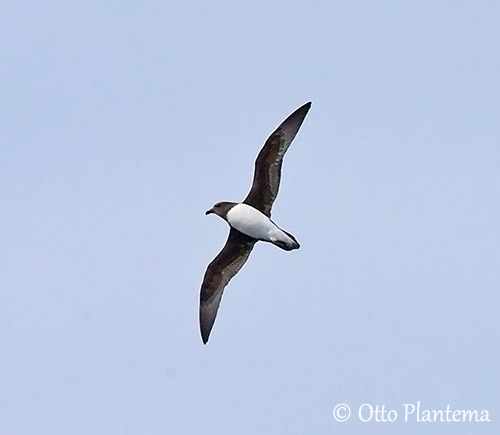
Critically Endangered
The prions’ group include six very similar species of genus Pachyptila and the Blue Petrel (Halobaena caerulea) that resembles Pachyptila species, but differs in some ecological aspects. All species occur in the Southern Ocean.
The prions are usually bluish-grey above and white below. They have a distinctive dark M-shaped marking across the upperwing. The Blue Petrel shows a white terminal band on the uppertail and dark markings on the head.
The prions of genus Pachyptila have broadened mandibles, and the upper mandible is fringed with comb-like lamellae used to filter the water and to retain small planktonic crustaceans. The bill shape varies among them, probably involving different diet and feeding behaviour. Another adaptation to their feeding technique is their “gular pouch” under the lower mandible, allowing them to bring more food to the chicks.
Unlike the Pachyptila prions, the Blue Petrel feeds on crustaceans, especially krill of genus Euphausia, small fish and squid caught by dipping while flying or swimming. It has smaller and thinner bill than prions.
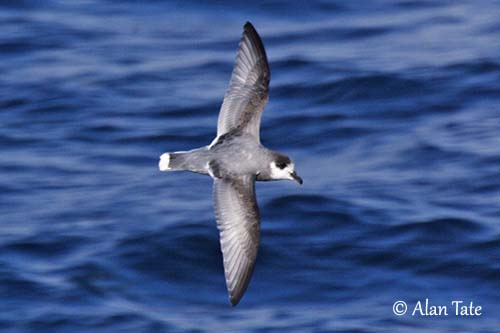
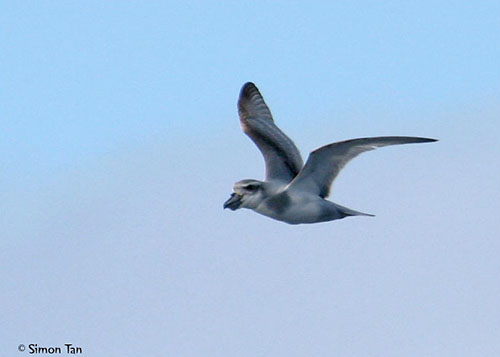
Prions are highly pelagic and usually occur far from land, in the oceanic waters of southern temperate, subantarctic and Antarctic zones. They can be seen south to the vicinity of the pack ice. They gather in large flocks at rich areas of convergence where they find planktonic animals. They sit on the water while filtering the food, but they also use “hydroplaning”, a technique in which the bird uses the feet to skim quickly over the surface. The wings are wide open and the bill or the head submerged. But several techniques are used according to each species.
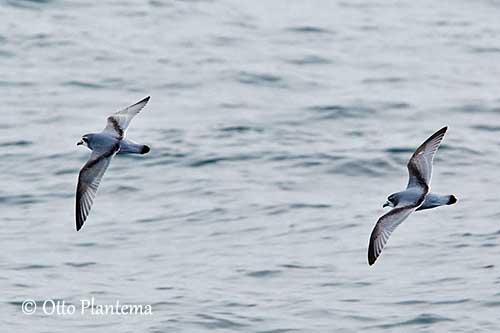
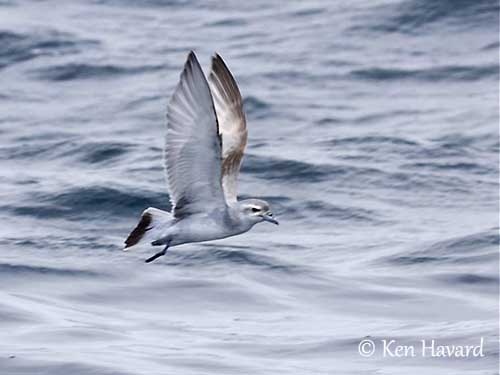
They breed in colonies established in steep rocky slopes, lava fields and cliffs. They nest in self-excavated burrows, or in cavities, boulders and crevices. They are essentially nocturnal on land.
They are silent away from their colonies and even while feeding. But while flying at night over the colonies, they produce a variety of sounds including harsh gurgling, growling, guttural notes and a piping whistle, also given inside the burrow.
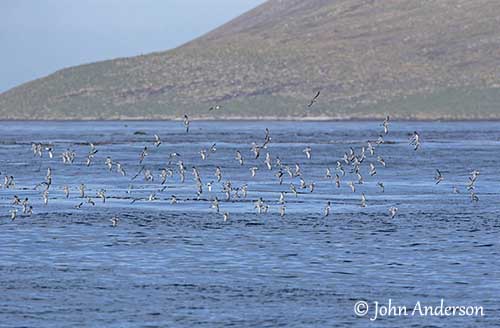
The shearwaters’ group shows highly complex taxonomy. This group includes five species in Procellaria, four in Calonectris, and around 25-26 in Puffinus, with several species having subspecies spread over wide ranges.
The shearwaters vary in size, from the Little Shearwater (Puffinus assimilis) at 25-28 centimetres long, to the White-chinned Petrel (Procellaria aequinoctialis) at 55 centimetres long.
Regarding their morphology, two groups can be distinguished with different flight and feeding behaviour.
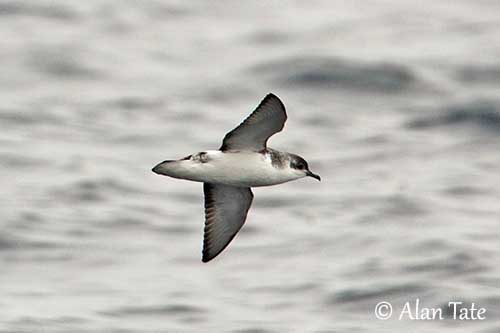
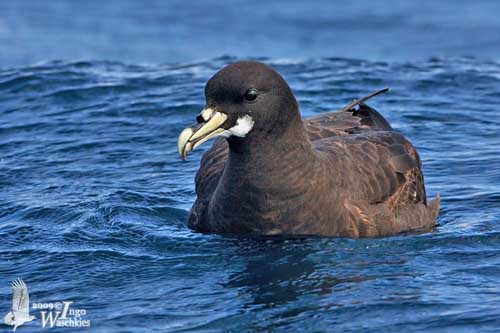
The Calonectris and most Procellaria, as well as the Wedge-tailed Shearwater (Ardenna pacifica) and Buller’s Shearwater (Ardenna bulleri), have longer wings and tail. They are more aerial and cover great distances, and they feed on the wing. They glide effortless above the waves, taking advantage of wind speed at different levels.
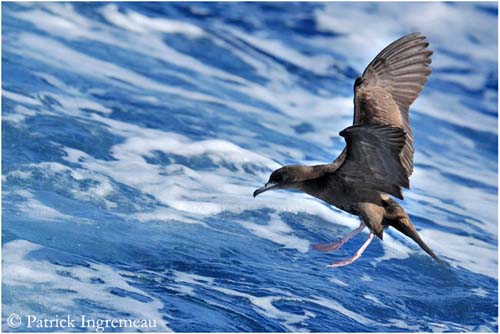
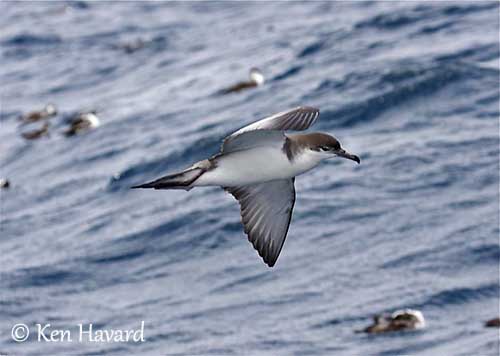
In contrast, the Grey Petrel (Procellaria cinerea) and most Puffinus species are more aquatic. They have stockier body, and shorter wings and tail. They fly more swiftly in strong winds, but in light breezes, they fly low over the water, alternating wingbeats and glides for faster flight. These species often feed under water, using their wings to “fly” under the surface.
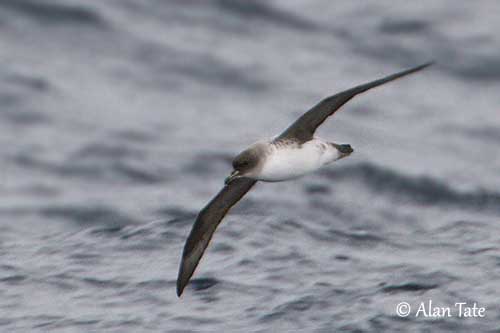
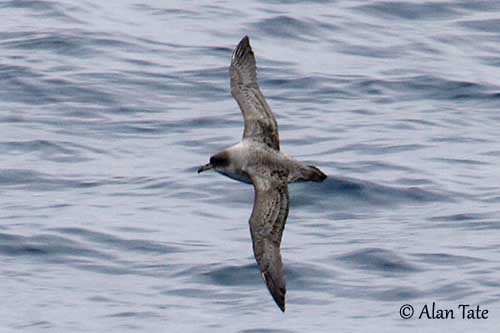
Most species dive from the air in shallow plunges before to perform underwater pursuit.
Generally, the shearwaters have longer and thinner bill with smaller hook than the birds of the three previous groups, and the open nostrils are very conspicuous. They have mostly blackish-brown plumage with some white markings on the head and paler areas on the wings. However, the Grey Petrel is ashy grey above and white below. The Scopoli’s Shearwater (Calonectris diomedea) and the Streaked Shearwater (Calonectris leucomelas) are grey-brown above and white below, the latter with white face and forehead.
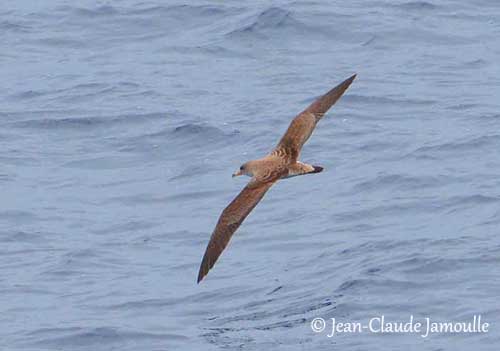
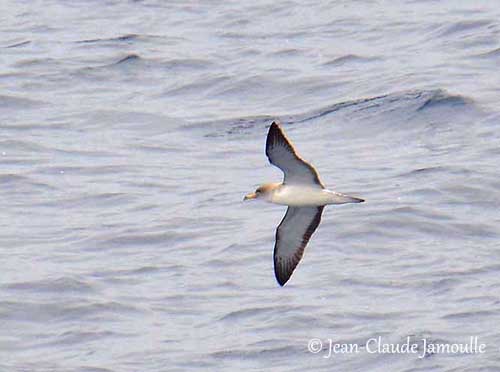
As they have very wide range, the shearwaters’ diet varies depending on species, region, season and food abundance. They feed mainly on crustaceans (Euphausia), fish and squid and various aquatic invertebrates.
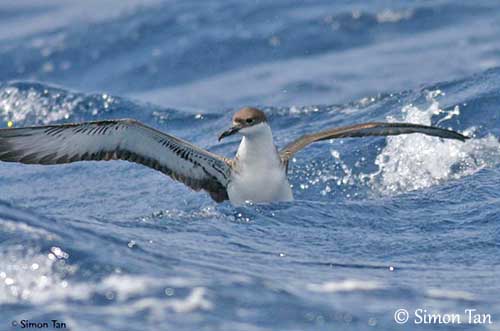

The shearwaters have wide distribution over the world’s oceans, and are present in both Northern and Southern Hemispheres. Most species come to land only for breeding and remain well offshore the rest of the year.
They nest in self-excavated burrows or in rock crevices, or hidden under dense vegetation. The colonies have usually a direct access to and from the sea, but in predator-free areas, they can be established several kilometres inland.
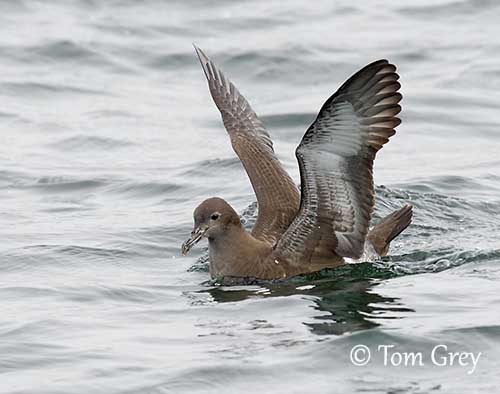
The Procellariidae species perform various courtship displays. The gadfly-petrels engage in elaborate aerial chases with high-speed swoops and towering, accompanied by loud calls. But the strictly nocturnal species have less spectacular displays. Most sexual activity between mates occurs inside the burrow and consists largely of “Billing” with oil dribbling down the bill, and mutual preening.

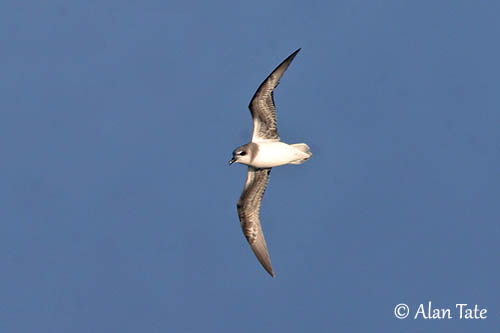
Various threat displays such as bill-snapping in Macronectes and ritualized aggressive displays showing the birds with spread wings and fanned tail forwards, and swaying the head at the same time are typical of the giant petrels.
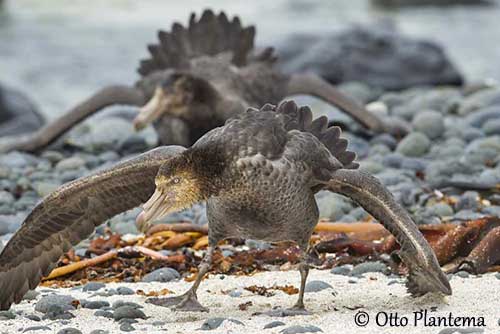
Fulmar-petrels defend their area with head-waving accompanied by loud hissing and harsh sounds. They are able to spit oil against intruders or congeners to defend the nest-site.
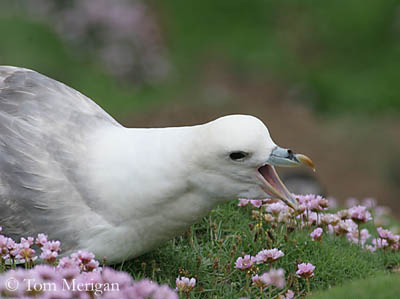
Generally, most species use fairly similar displays to strengthen the pair-bonds, including the usual head-waving, but also cackling-display, mutual preening and mutual-billing.
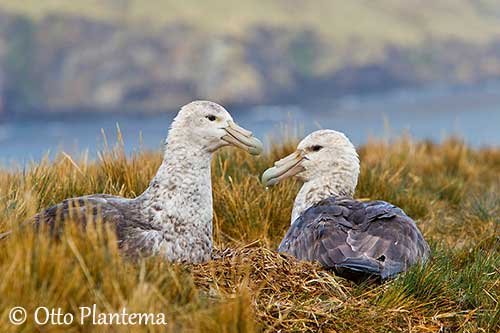
Pair at nest
The same nest is often reused year after year by the same pair, as long as the birds survive. They are monogamous and the nest is the point where they meet after migrating. The first bird to arrive at the colony waits for its mate in the nest.
After mating, both mates usually perform a pre-laying exodus of several days to regain weight after the long period on land during the preparation of the nest, territorial defence and mating.
The female usually lays a single, large, white egg. Both adults share the incubation with stints of several days, between 2 and 14 days in most species. But this period may vary according to food resources and distance to the foraging areas. Each bird incubates during about 3-5 days but towards the end, they change over every 24 hours. This period is very long, about 7-8 weeks in most species, with an average of 6-9 weeks.
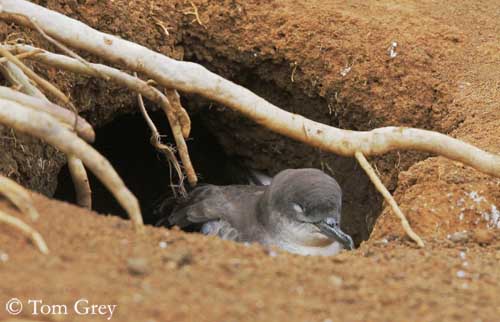
At nest entrance
At hatching, the chick has short, soft down, varying in colour from pure white to grey or wholly dark. Usually, at least one of the adults remains with it during several days depending on the species and the type of nest. Once the chick is able to regulate its own body temperature, both parents leave the nest during the day and return only for feeding the young. It is fed with an oily substance, result of the partial digestion of the usual food. With this food, the chicks become very fat, making it resistant to starvation. Then, it loses gradually weight as the feathers are growing. When approaching the fledging weight, it is abandoned by its parents.
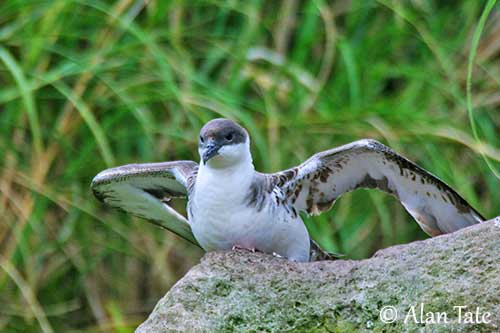
Usually, it leaves the nest between 6 and 15 days after parents’ desertion, and flies out to sea on its own. It flies exclusively at night, with any flying experience if it is burrow-bred. It is very vulnerable to predators if the colony is situated far inland. The usual predators are gulls, skuas, corvids and raptors. But the young bird is facing other threats such as cats and dogs near habitations, cars while crossing roads, and bad weather conditions. However, the breeding success is generally high, except at colonies subject to predation.
At nest on rocky ledge
The Procellariidae are often long-lived, and can live about 15-20 years, with some individuals known to have lived for over 30 years. Adults and immature birds have a complete post-breeding moult starting shortly after (or even during) the nesting period, and lasting until autumn or winter.
Fulmar-petrels, gadfly-petrels, prions and shearwaters are migratory or at least highly mobile. They may travel several thousand kilometres during several months. Some species remain all the year in vicinity of the colonies. Usually, the breeding adults remain in the adjacent waters and sometimes visit the colonies outside the breeding season, whereas the young birds wander far and wide.
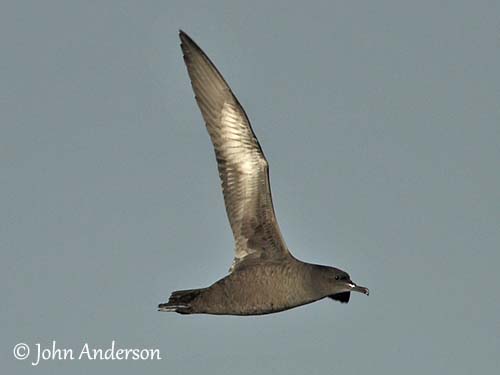

Several shearwaters nest on subantarctic islands and reach the subarctic regions during the migration. They usually fly in a 8-pattern figure which is the longest route, but they take advantage of the side winds allowing them to cover great distances with little effort. Some species are able to perform this type of migration, among them the Buller’s Shearwater in the Pacific, the Great Shearwater and the Sooty Shearwater in both Atlantic and Pacific Oceans. The Mottled Petrel (Pterodroma inexpectata) flies from New Zealand to the Bering Sea and back in a circular route.
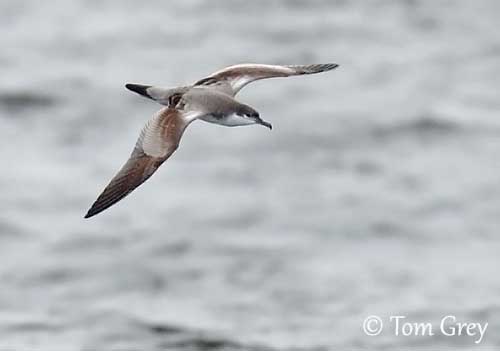
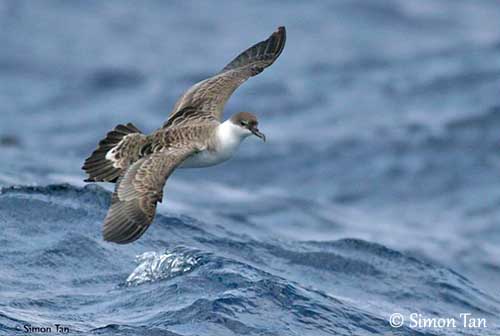
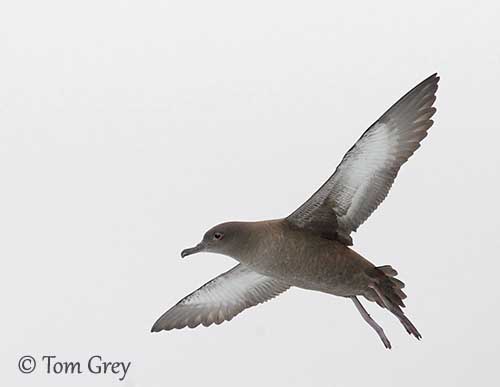
Generally, most Procellariidae are dispersive and nomadic after breeding, and may occur irregularly over considerable areas. Unlike other species, the Snow Petrel and the Antarctic Petrel are associated to the pack ice, and move occasionally from their Antarctic usual places by long periods of bad weather with strong winds.
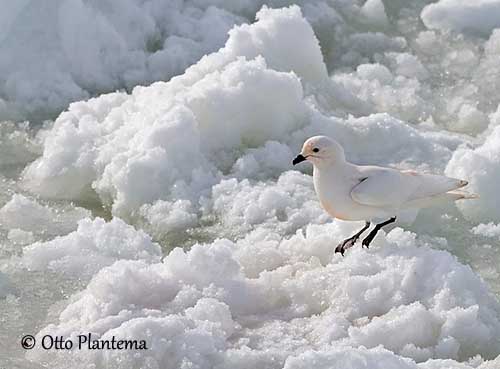
The Procellariidae are threatened by introduced predators on their breeding islands, but now, several islands are predator-free, through effective actions. Human exploitation for food is still responsible for the rarity of some species, but destruction of both habitat and nesting burrows, man’s activities at sea that reduces the prey availability in some areas (although they may benefit from offal and discarded fish), and birds remaining entangled in the fishing nets or swallowing baited hooks are important threats too. Pollution of food supplies is a real problem, even in Antarctica, and oil spill in the vicinity of the colonies is a serious danger for their future.
Natural predation involves a certain amount of mortality too. Many birds including skuas, gulls, crows, raptors, Wekas and owls readily prey on petrels.
More than 20 Pterodroma species are categorized as Vulnerable, Endangered or Critical, and generally, several species are globally threatened and classified as Near Threatened.
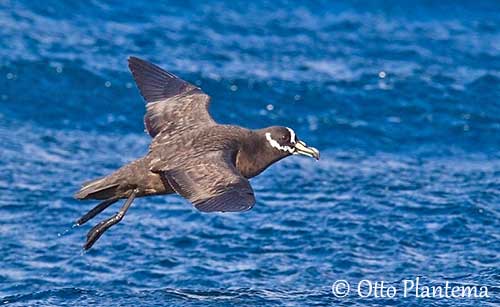
Vulnerable
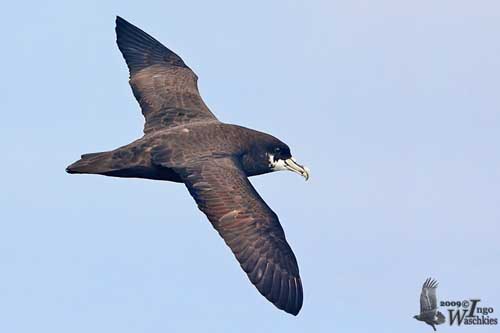
Vulnerable

Vulnerable